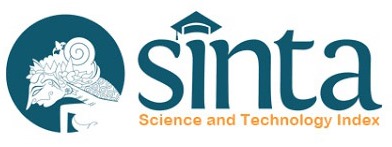The Influence of Acid and Cooking Methods on The Quality of Fish Meal Processed from by-products of Catfish Fillet Processing
Abstract
Catfish fillet processing produces a by-product dominated by heads (25- 28%) and bones (11-13%). This study aims to process fish meal from by- products of catfish using different treatments, namely soaking in a 4% formic acid solution (F) and a 4% hydrochloric acid solution (H), as well as cooking techniques involving boiling (R) and steaming (K). Observations were made on the yield, pH, proximate analysis, calcium content, NPN (non-protein nitrogen), TBA (thiobarbituric acid), microbiological tests, sensory evaluation, and amino acid profiles. The research showed that soaking in acid caused a decrease in pH, protein content, and TBA and increased the fat content of the resulting fish meal. The optimal treatment for the highest quality fish meal is steaming without acid treatment. In this treatment, the protein content meet the requirements of the SNI 01.2725.01.2013 as grade 3 fish meal, with a yield of 22.83%, a pH of 6.86, a moisture content of 6.2 ± 0.3%, an ash content of 27.33 ± 0.7%, and a protein content of 45.5 ± 1.3%. Analysis of the amino acid profile of fish meal from that treatment showed a better amino acid composition compared to commercial fish meal. The fish meal contained essential amino acids in sufficient quantities, with higher levels compared to the amino acid standards set by FAO/WHO 2013 for human nutritional needs, and met the requirements as a nutritional ingredient for fish and livestock feed.
Keywords
Full Text:
PDFDOI: https://doi.org/10.15578/squalen.800
Refbacks
- There are currently no refbacks.
ISSN : 2089-5690(print), E-ISSN : 2406-9272(online)
This work is licensed under a Creative Commons Attribution-NonCommercial-ShareAlike 4.0 International License.










